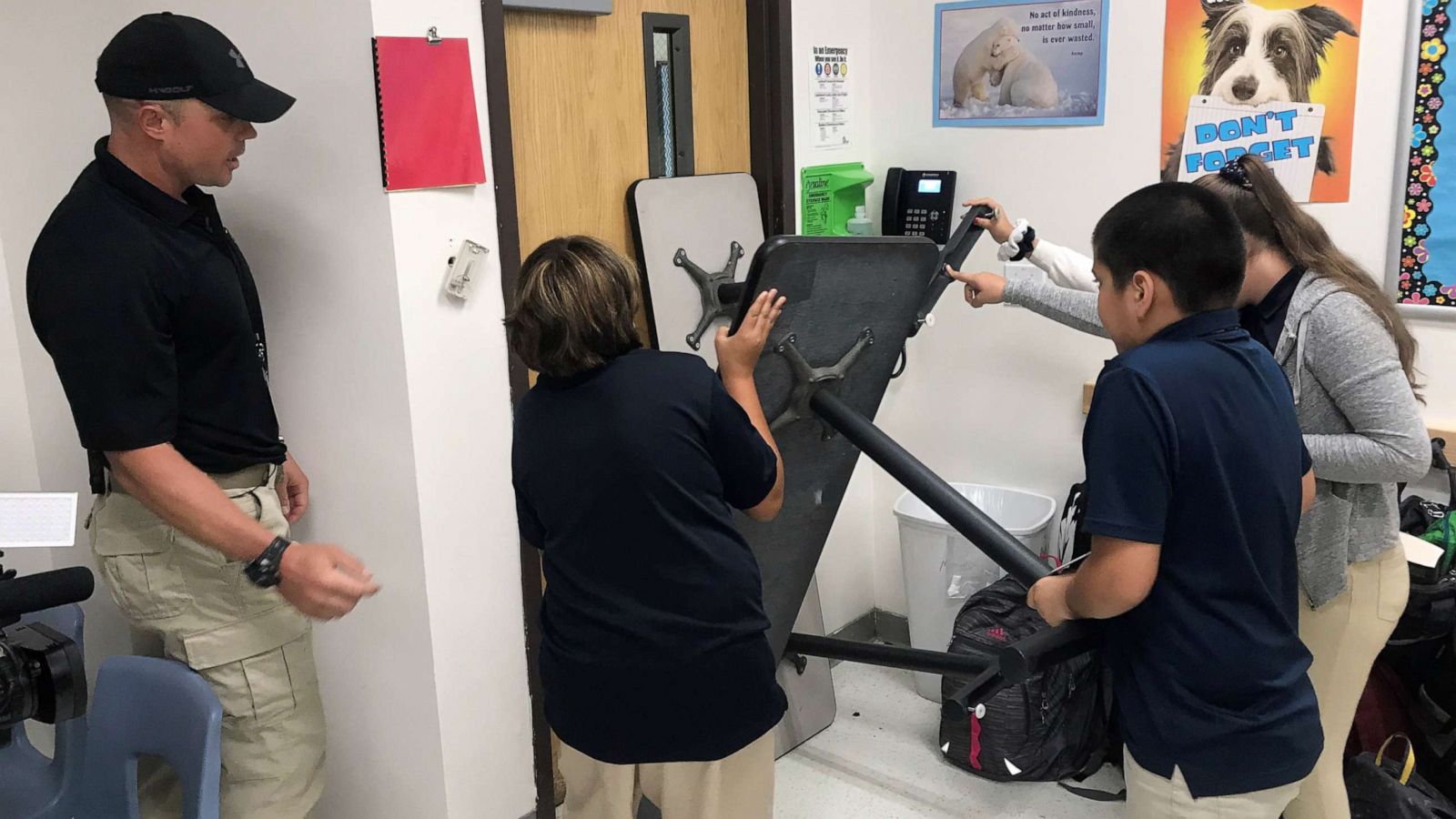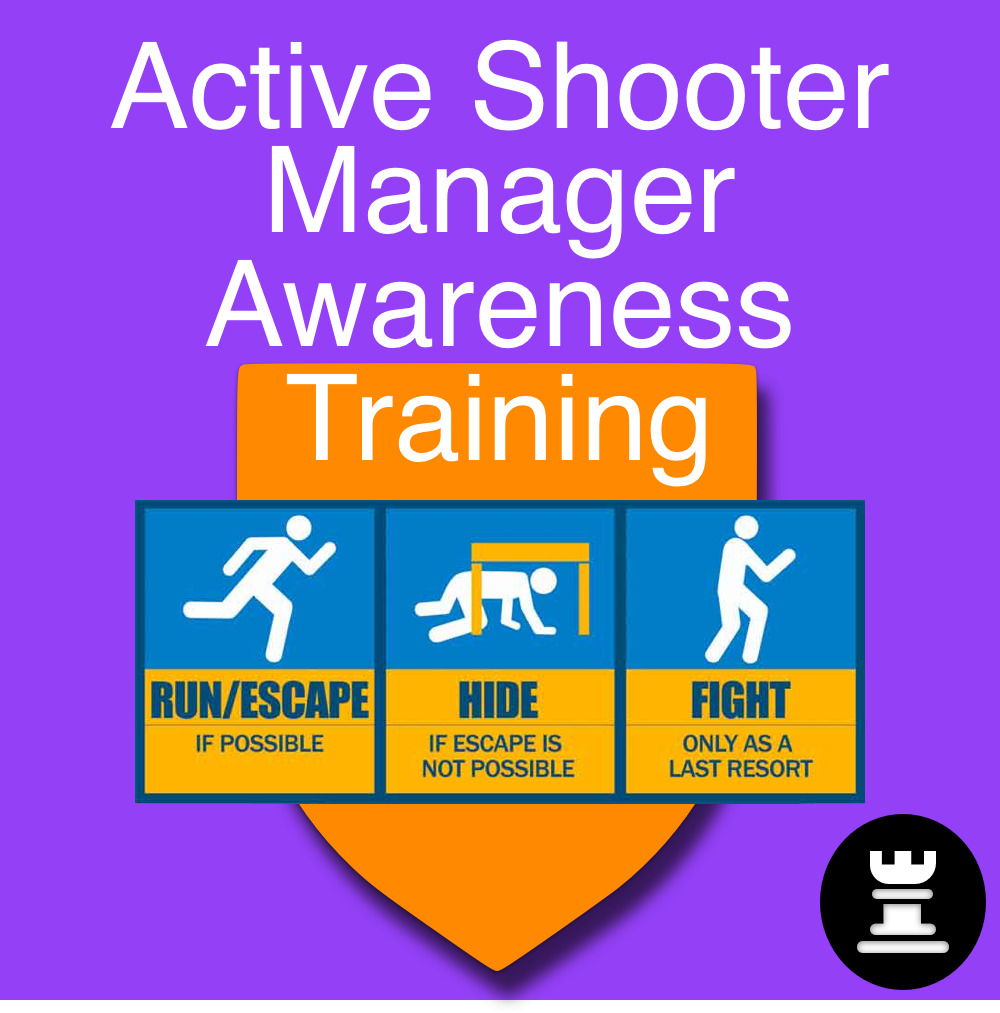Ensuring Public Security with Advanced Active Shooter Training Approaches
Ensuring Public Security with Advanced Active Shooter Training Approaches
Blog Article
Checking Out the Key Components and Goals of Reliable Active Shooter Training Programs
Active shooter training programs are crucial in furnishing individuals and organizations with the necessary skills to react effectively to potential dangers. As we discover the ins and outs of these training programs, it becomes apparent that recognizing their detailed nature is crucial to boosting safety and security measures and reaction capacities.
Value of Energetic Shooter Training
Active shooter training programs are essential for boosting preparedness and reaction when faced with prospective risks. These programs intend to furnish individuals, companies, and neighborhoods with the knowledge and abilities needed to efficiently react to active shooter circumstances. The enhancing frequency and seriousness of such events underscore the significance of aggressive measures, as prompt and enlightened feedbacks can substantially reduce injury.
Additionally, active shooter training fosters a culture of security and recognition within institutions, whether they be colleges, offices, or public locations. Individuals learn to identify early caution signs and comprehend the significance of interaction and team effort throughout emergency situations. This training not only highlights individual security but likewise promotes a collective duty to safeguard others.
Furthermore, these programs can aid alleviate the anxiousness and fear that commonly come with discussions about possible risks. By providing organized advice and practical strategies, individuals obtain confidence in their capability to respond suitably. Eventually, the value of energetic shooter training lies in its potential to conserve lives, minimize injuries, and grow a ready and durable neighborhood with the ability of facing unpredicted challenges.
Trick Parts of Training Programs
Effective active shooter training programs typically incorporate several vital components created to prepare participants for real-world scenarios. The very first element is detailed education on the nature of energetic shooter occurrences, including data, case research studies, and psychological factors that affect aggressors. This theoretical structure is essential for cultivating understanding and understanding amongst participants.
Following, programs commonly include training on individual precaution, highlighting the "Run, Hide, Battle" approach. Participants find out how to examine their environment, make quick choices, and take suitable activities throughout a crisis. Furthermore, the inclusion of effective communication skills is essential, as participants need to recognize just how to report cases and share essential info with police.
An additional vital part is the involvement of police or protection specialists, that give insights right into tactical feedbacks and the relevance of cooperation throughout a dilemma. Programs ought to address the emotional after-effects of an active shooter circumstance, offering approaches for dealing and recuperation.
Finally, recurring training and correspondence course are crucial to make sure that expertise continues to be current and individuals feel great in their capacities. Together, these crucial components create an all-around training program that outfits people to respond efficiently to an active shooter event.
Realistic Situation Simulations
Realistic situation simulations are a critical facet of energetic shooter training programs, offering participants with the chance to engage in hands-on technique that mirrors potential real-life circumstances. These simulations improve the training experience by developing an immersive setting where individuals can use academic expertise in sensible setups.
Through making use of role-playing, mock circumstances, and specialized training centers, participants experience the immediate challenges and stress factors connected with an active shooter incident. This method of training promotes quick decision-making, team effort, and the application of safety and security methods under stress. It allows responders to develop vital skills such why not look here as situational awareness, threat analysis, and reliable emptying procedures.
In addition, realistic simulations aid to determine potential weaknesses in individuals' reactions, making it possible for trainers to supply targeted feedback and boost overall preparedness. The incorporation of differing situations, including various locations and assailant profiles, better enriches the training experience, making certain that individuals are fully equipped to manage a series of potential situations.
Inevitably, these simulations offer not just to instruct yet also to build confidence amongst individuals, cultivating a sense of readiness that is necessary for reliable emergency reaction in the face of an active shooter hazard.
Communication Approaches in Training
Clear communication is crucial in energetic shooter training programs, as it directly affects the efficiency of reaction efforts throughout a dilemma. active shooter training. Training individuals have to understand the protocols and treatments that will certainly guide their activities if confronted with an active shooter circumstance. Establishing clear lines of communication ensures that all people involved can pass on info promptly and accurately

Moreover, training programs must highlight the significance of energetic listening. Individuals must be educated to analyze and respond to info effectively, lessening misconceptions that might cause harmful scenarios. Normal responses sessions post-training can additionally improve interaction approaches, making sure that all individuals really feel equipped to share their experiences and suggestions for renovation. Ultimately, efficient communication approaches are necessary for preparing individuals to react emphatically and cohesively despite an active shooter incident.

Emotional Preparedness Methods
Emotional readiness methods are significantly acknowledged as essential elements of active shooter training programs - active shooter training. These strategies aim to equip people with the psychological resilience required to respond properly in high-stress circumstances. By fostering a state of mind in harmony with possible hazards, participants can better take care of worry, stress and anxiety, and confusion throughout critical occurrences
Secret emotional preparedness strategies consist of scenario-based training and stress and anxiety inoculation workouts. Scenario-based training submerses individuals in sensible simulations that imitate the chaos of an energetic shooter event, permitting them to exercise decision-making under pressure. This direct exposure helps build familiarity with emergency protocols, boosting instinctual reactions.
Stress vaccination entails steady direct exposure to stress-inducing situations, allowing people to establish coping mechanisms. This can include breathing workouts, visualization methods, and cognitive restructuring to reframe adverse thoughts. By incorporating these strategies, training programs can cultivate a about his feeling of self-confidence and control, which is essential in situation situations.
Furthermore, post-incident psychological support is essential to address the emotional consequences of an energetic shooter event. Incorporating psychological health sources into training programs not only prepares people for prompt feedbacks but additionally promotes long-lasting psychological well-being, eventually adding to a more secure and a lot more resilient environment.
Conclusion
To conclude, effective active shooter training programs are important for enhancing preparedness and response capabilities despite possible hazards. By incorporating important parts such as sensible scenario simulations, communication techniques, and emotional preparedness methods, these programs furnish people and companies with the needed skills to browse high-stress circumstances. Inevitably, an extensive approach to training promotes durability and advertises a society of safety, thus adding to the general safety of communities in the event of an energetic shooter occurrence.
Report this page